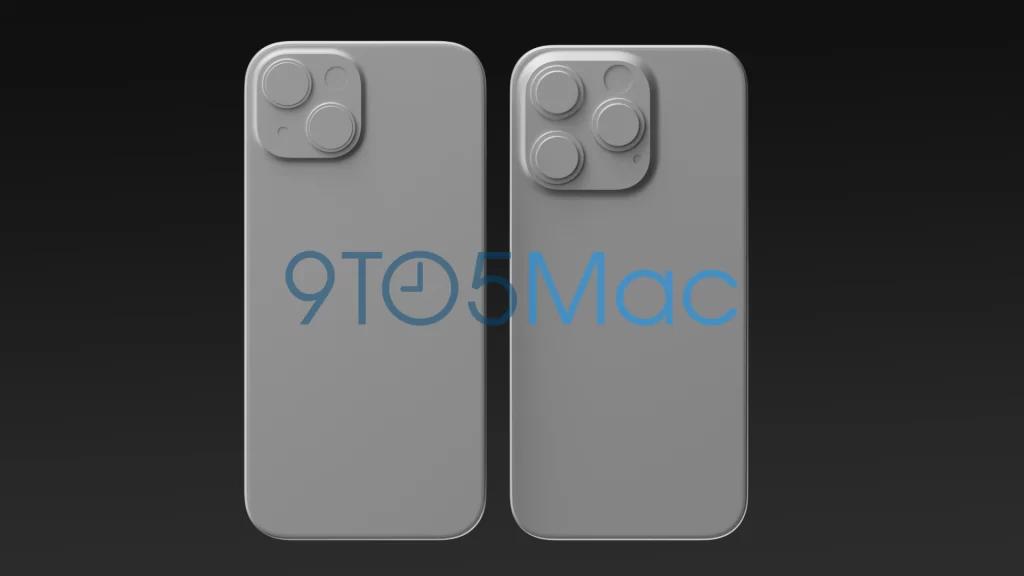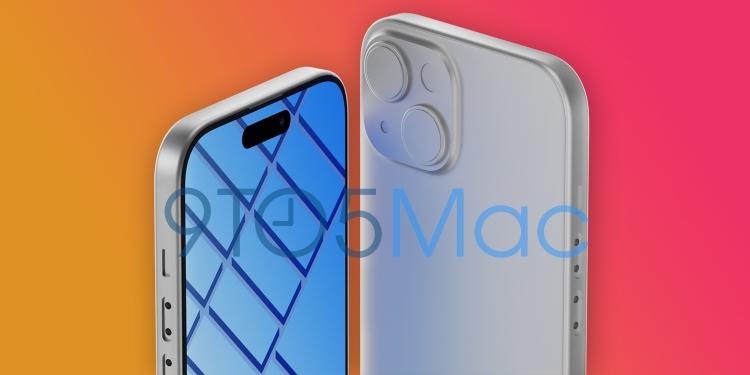We’re still months away from the traditional yearly iPhone reveal in September, but leaks of Apple’s upcoming devices are coming thick and fast. Last week, we saw the first CAD renders and photos of the iPhone 15 Pro, and now we’re getting a glimpse of the vanilla 15, thanks to renders obtained by 9to5Mac.
A lot of what we’re seeing here is very similar to the Pro variant, but there are a couple of surprises. For one, the publication says the regular model will actually get a slightly larger 6.2-inch display, compared to the 6.1-inch panel seen on the more expensive model.
We should probably take that claim with a pinch of salt, however—what’s more likely is that the actual screen size is the same 6.1 inches, but the bezels remain identical to last year (the Pro is said to have slimmed those down), so the phone’s physical size is slightly larger.


The second big news is that the standard models will at last inherit the Dynamic Island from the 14 Pro, eliminating the trademark notch. As with that phone, the pill-shaped cutout incorporates the selfie camera and Face ID hardware, and it should also expand and shrink to show more information regarding background processes. Hopefully this change will also finally bring with it an upgrade to a 120Hz adaptive refresh rate, the mainstream model having been stuck at 60Hz since time immemorial.
The rest of the design details are similar to the Pro model. After three years of sticking with an aggressively flat design, Apple looks to be rounding off the edges with the iPhone 15, bringing it in line with the latest 14- and 16-inch MacBook Pro. This may also necessitate slightly curved front and rear glass—last used on the iPhone 11—in order to keep them flush with the new chassis.
Unlike the Pro, which is expected to graduate from a stainless steel to a titanium construction, the regular 15 should maintain the same aluminium build as before. One thing of note is that the standard and Plus variants are expected to retain the use of physical buttons and switches, instead of moving to the solid-state capacitive buttons like the Pro and Pro Max reportedly will. Last but not least, all iPhone 15 models appear to be switching from a Lightning to a USB-C port, one year earlier than the European mandate.
Otherwise, the iPhone 15 looks to be par for the course for the mainstream iPhone line. You still get dual cameras with a main and ultra-wide shooter, with no telephoto camera or a lidar sensor in sight. The device is also expected to move up to an A16 Bionic from last year’s Pro models; the 15 Pro will instead almost certainly receive a newer A17 Bionic that is reportedly delivers a big boost in efficiency while still offering a performance increase.








